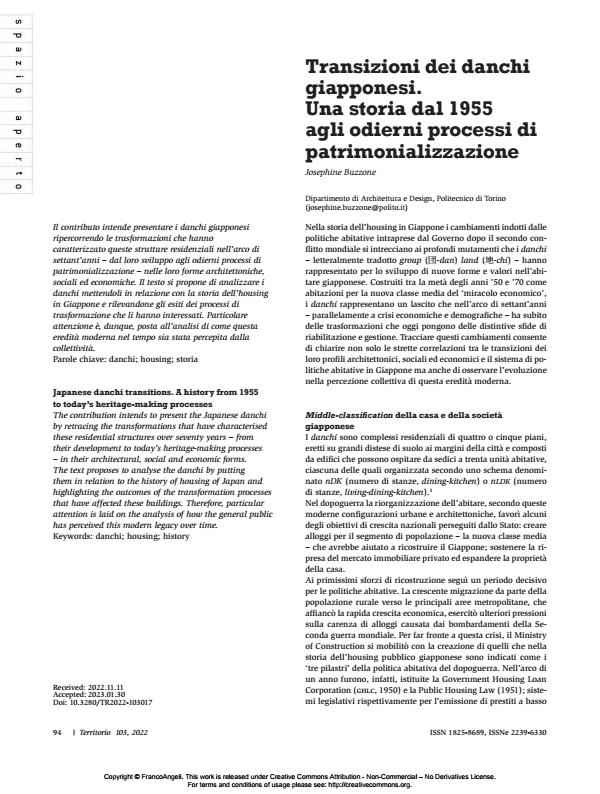Transizioni dei danchi giapponesi. Una storia dal 1955 agli odierni processi di patrimonializzazione
Titolo Rivista TERRITORIO
Autori/Curatori Josephine Buzzone
Anno di pubblicazione 2023 Fascicolo 2022/103
Lingua Italiano Numero pagine 10 P. 94-103 Dimensione file 855 KB
DOI 10.3280/TR2023-103017
Il DOI è il codice a barre della proprietà intellettuale: per saperne di più
clicca qui
Qui sotto puoi vedere in anteprima la prima pagina di questo articolo.
Se questo articolo ti interessa, lo puoi acquistare (e scaricare in formato pdf) seguendo le facili indicazioni per acquistare il download credit. Acquista Download Credits per scaricare questo Articolo in formato PDF

FrancoAngeli è membro della Publishers International Linking Association, Inc (PILA)associazione indipendente e non profit per facilitare (attraverso i servizi tecnologici implementati da CrossRef.org) l’accesso degli studiosi ai contenuti digitali nelle pubblicazioni professionali e scientifiche
Il contributo intende presentare i danchi giapponesi ripercorrendo le trasformazioni che hanno caratterizzato queste strutture residenziali nell’arco di settant’anni – dal loro sviluppo agli odierni processi di patrimonializzazione – nelle loro forme architettoniche, sociali ed economiche. Il testo si propone di analizzare i danchi mettendoli in relazione con la storia dell’housing in Giappone e rilevandone gli esiti dei processi di trasformazione che li hanno interessati. Particolare attenzione è, dunque, posta all’analisi di come questa eredità moderna nel tempo sia stata percepita dalla collettività.
Parole chiave:danchi; housing; storia
Josephine Buzzone, Transizioni dei danchi giapponesi. Una storia dal 1955 agli odierni processi di patrimonializzazione in "TERRITORIO" 103/2022, pp 94-103, DOI: 10.3280/TR2023-103017